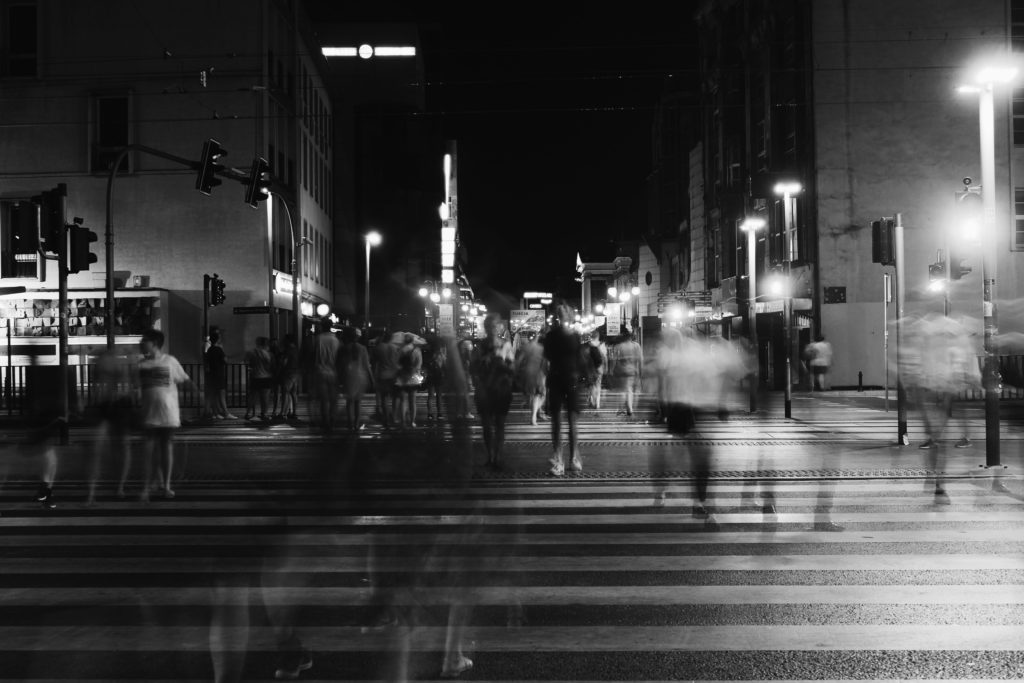Is mentalism only successful on the stage?
Of course not!
In fact, Derren Brown, one of the greatest modern mentalists, began his outstanding career in the streets of London.
Although most of his recent shows are done on stage, he didn’t start out that way. Brown began his career by doing walk-around performances around neighborhood restaurants.
This is proof that successful mentalist performances aren’t just for the stage.
If you’re interested in street mentalism, this article will tell you all you need to know.
So let’s begin!
The Controversy of Street Mentalism
With more and more people becoming interested in mentalism and its various techniques, it isn’t surprising that several mentalists have decided to take their acts beyond traditional venues – they’ve brought the act to the streets.
However, the question of whether these acts should be taken to the streets is commonly asked in the mentalism community and has sparked a lot of opinions.
Most mentalists believe there is a big difference between magic and mentalism and are quick to draw a line between what they do during performances compared to magicians. Because of that, it’s expected that some think doing mentalism acts on the street is belittling the craft.
Others, however, approached the concept with a “Yes, it can be done” and a “why not try” attitude.
So even though there is some controversy on this topic, nobody is stopping you from mastering street mentalism.
How Can You Succeed with Street Mentalism?
Traditionally, mentalism acts are done with captured audiences in carefully set up venues. So one anticipated challenge with bringing it to the streets is the pace of mentalism performances.
Most mentalism performances may be too slow and require too much patience for street audiences. Remember people’s attention in the streets may not be as easy to hold, and this may be completely different from a contained audience, mentally prepared for a mentalist act.
Not to say that they’d be less interested in feats of mentalism, but most people are ready to bolt at a moment’s notice. You may need to amend the slow, suspense-building process of traditional performances. But it can be done.
A mentalist can do several things to have a successful street performance. Here are some of them:
Approach the Right Subjects

As mentioned earlier, contained audiences are ready to go through the process of a mentalist’s performance — and they’re going through that experience willingly.
Approaching strangers adds a certain degree of difficulty because the principles of mentalism still hold – making sure you have the right subject.
If you approach a potential subject and find out he is skeptical or unwilling, it may be a better idea to move on to the next one.
Look for a subject that is willing to be amazed by your “abilities”, that isn’t too skeptical, and has enough time to take part in your trick.
Capture the Audience’s Attention Immediately
One important thing to do is capture the audience’s attention immediately. This is so that they are forced to anticipate what you are going to do next and stay longer to watch your performance.
Some say tricks that require more involvement, rather than just having them think of something, can aid in capturing their attention. It may mean having them write something down, talk about their stories, etc…
Ensure Your Skills Are Above Par
Unless you know your act like the back of your hand, bringing it to the street may not be the best of ideas.
Trying to keep your audience’s attention while simultaneously trying to deliver your act with confidence is a struggle if you’re not ready for it.
A good workaround is to take one variable out of the equation — in this case, it’s how sure you are about your ability to flawlessly pull off your performance. This way, you can dedicate most of your energy to your subject.
Continue Developing Your Skills
Learning the actual trick isn’t the only thing you’ll need to do when preparing for street mentalism. You’ll be at an advantage if you take the time to develop specific abilities, particularly observation skills, reading body language, and micro-expressions.
Hot reading may no longer be possible in the street (at least not to the same extent as a contained audience), so you’ll have to be able to rely heavily on people’s cues and tells.
Developing soft skills such as storytelling and small talk will also help, as well as analytical skills. In the end, though, it’s how you’re able to put things together in the fastest time possible that makes a standout performance.
Utilize Storytelling and Small Talk
No matter how much you tell your subjects to keep their attention on you, you’ll be competing with multiple distractions. These include other people milling around and various sights and sounds in your immediate environment that you can’t eliminate.
That’s where storytelling and small talk come in handy. It’s a bit more challenging to create rapport (which is your gateway to trust) when you’re approaching random people.
Studying them from a distance is a good idea because you may pick up cues on who may be more suitable audiences, but it takes great skill to establish an immediate connection — more so to sustain it.
So practice absorbing storytelling and even small talk to keep their attention on you.
Use Snappy Performances
Street mentalism performances have to be done faster, at a snappier pace, without losing opportunities to build suspense.
Keep in mind that even if you don’t have as much time to go through your act, it doesn’t mean that you’ll automatically throw out the answer.
Like traditional mentalist performances, theatrics are just as crucial to street performances, especially if you want to appear like you have the capability of reading minds.
Adjust Your Performance to Fit the Environment
Lastly, choose mentalism tricks that suit the streets — and you have to be prepared to learn new ones if the ones you’ve gotten used to won’t translate effectively in a different environment.
So if you’re a street mentalist, always have a good set of tricks up your sleeve.
The Verdict
Street mentalism may not be how mentalists traditionally deliver their performances, but it doesn’t mean that it can’t be done.
If you feel strongly about not making your act appear like a magic show, you’ll have to put in the work to make sure you remain faithful to the idea of mentalism. It may take a lot of adjustment, but with enough practice, it is possible.
In the end, the trick to a successful performance – regardless of whether you follow tradition or take your chances in a more uncertain setting – is to keep developing your skills and practice, practice, practice!

